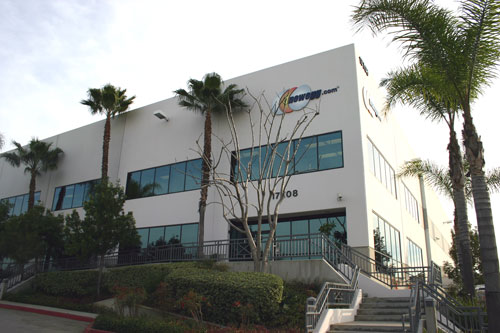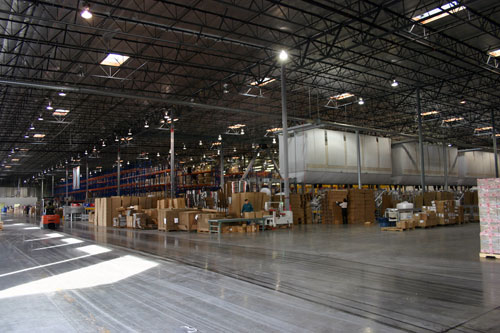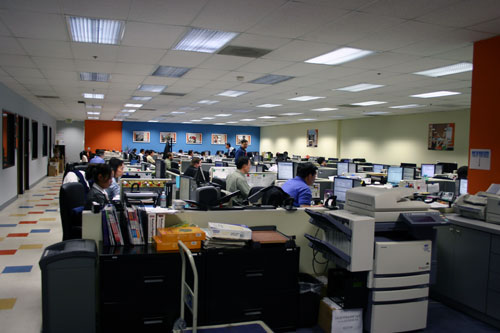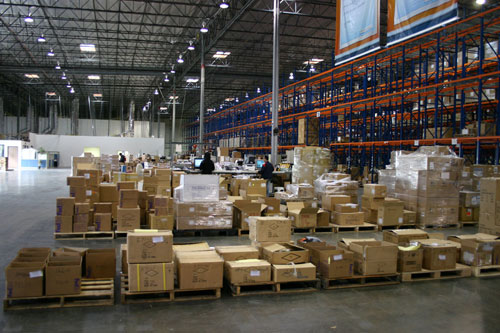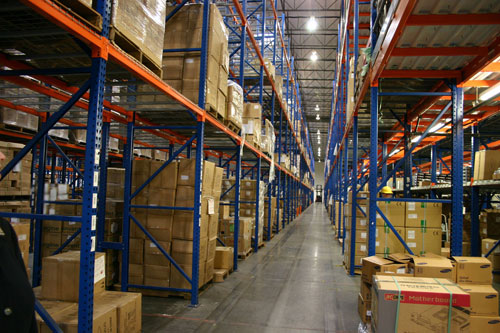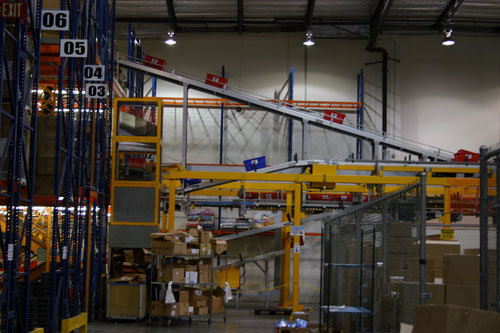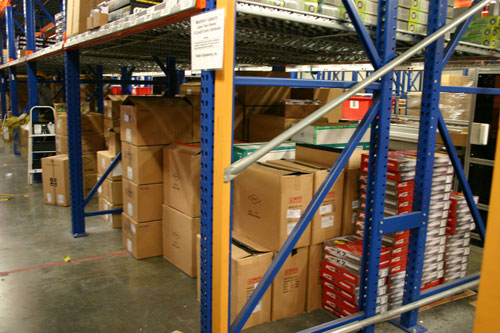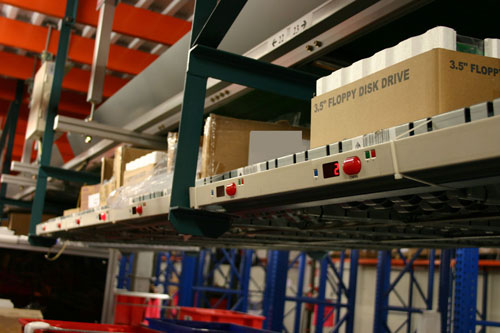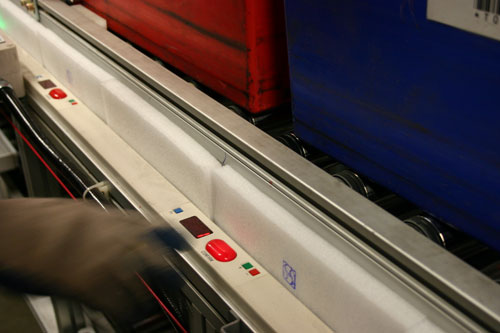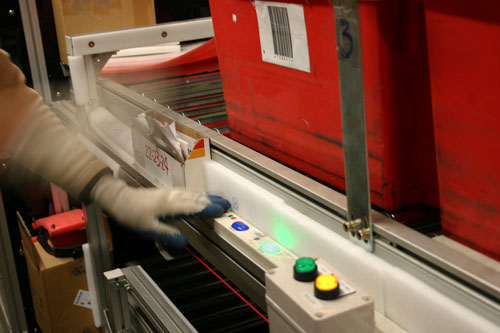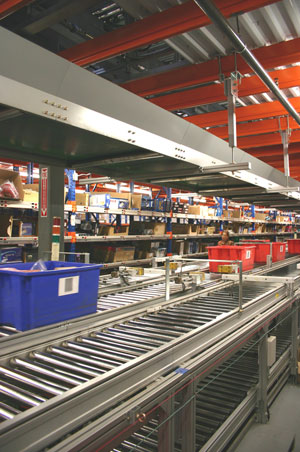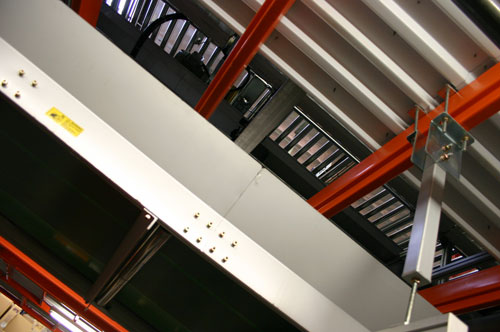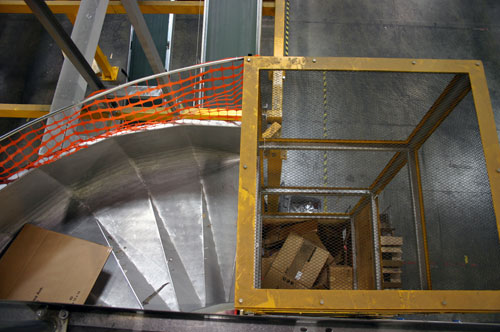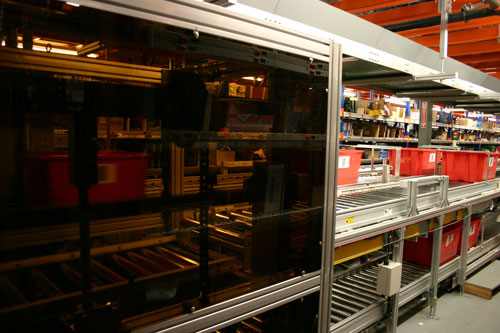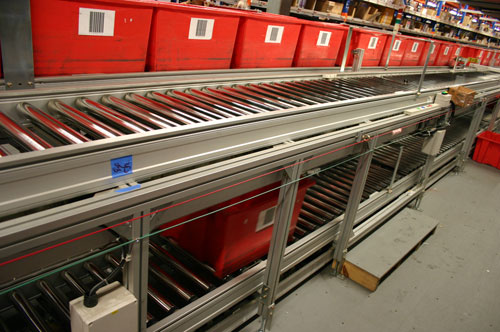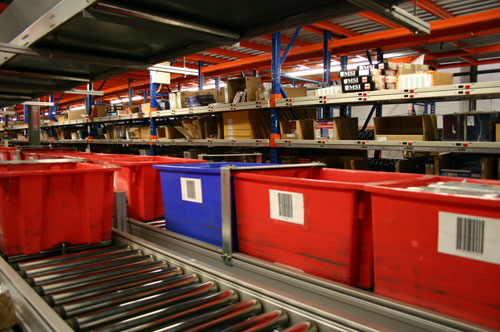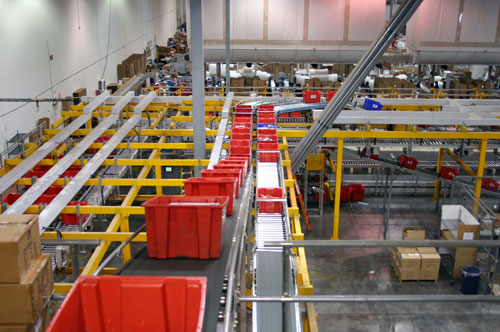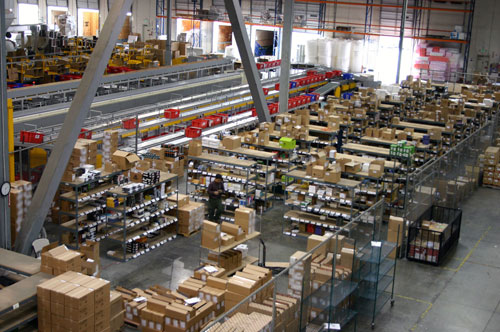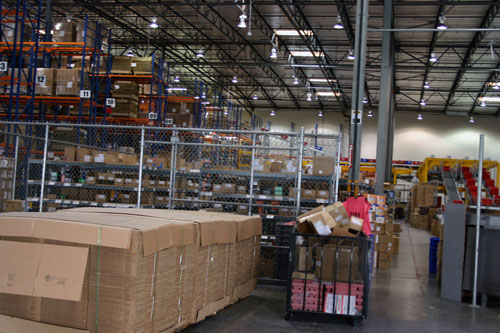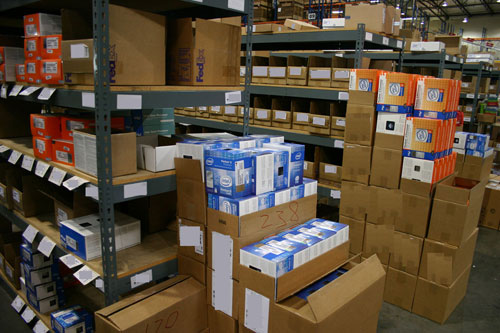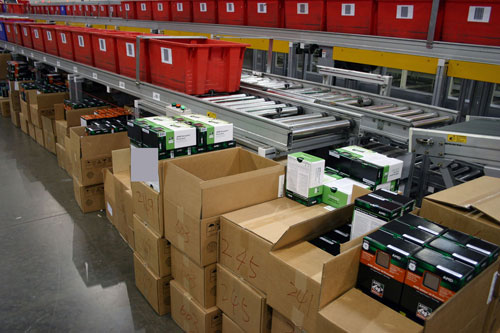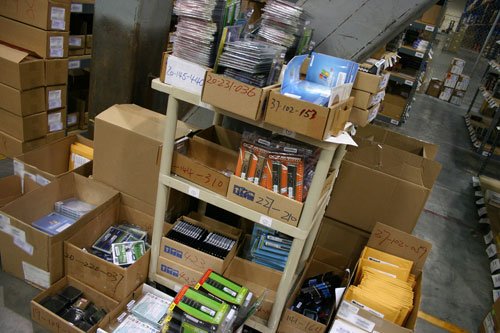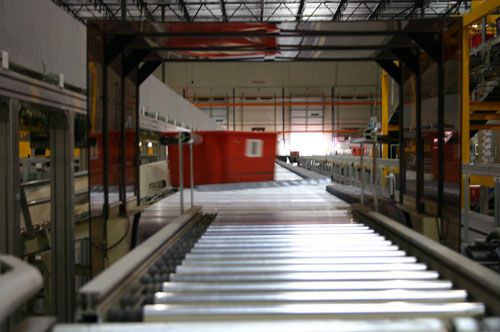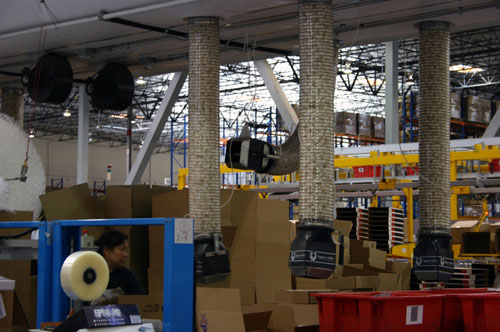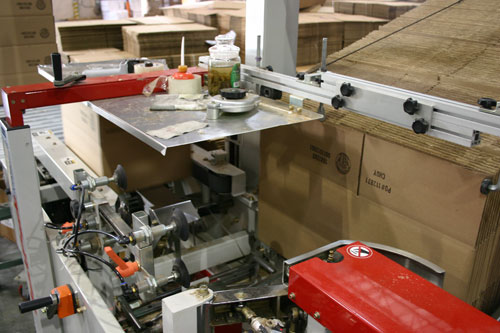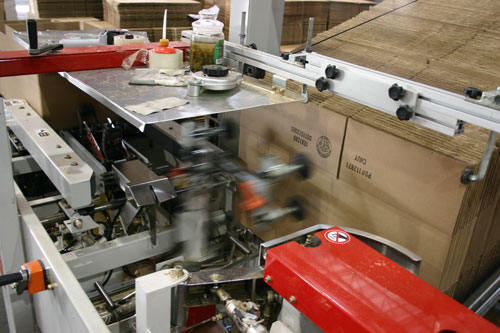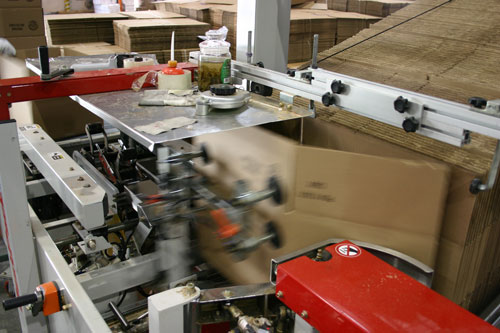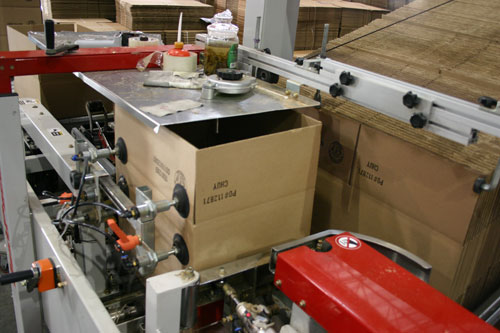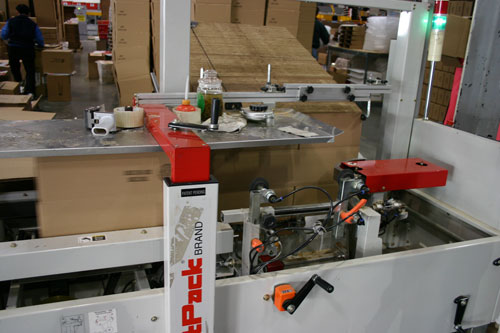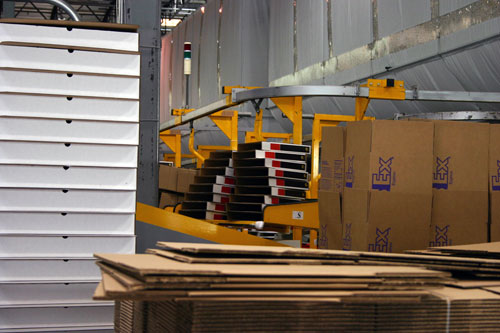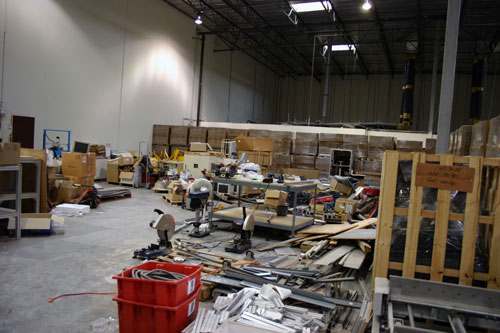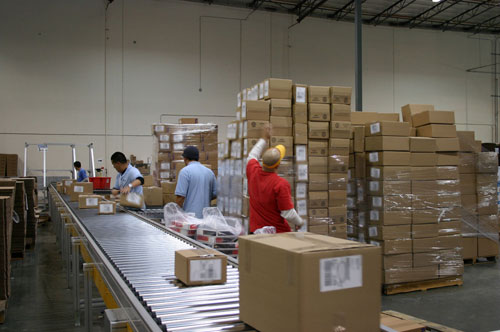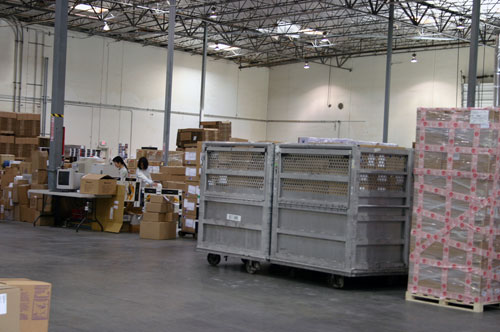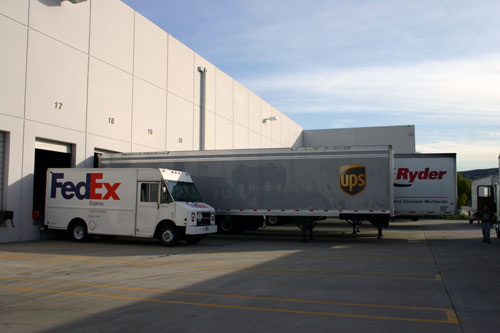
Original Link: https://www.anandtech.com/show/1945
Inside Newegg: They give us a Tour and you a Prize
by Anand Lal Shimpi on February 14, 2006 3:31 PM EST- Posted in
- IT Computing
Established in 2001, Newegg has quickly become a household name among AnandTech readers. They originally won the hearts of many readers by offering extremely competitive prices and keeping customer service a top priority. Since their humble beginnings the company has grown tremendously, with net sales in 2005 of approximately $1.3 billion, a 30% increase over the prior year. Newegg currently stocks over 60,000 different products and ships up to 25,000 orders per day, 98% of them within 24 hours.
On a recent trip to Los Angeles we were given the opportunity to take a tour of one of Newegg's warehouses. While we've been able to tour Newegg's facilities in the past, this time they let us publish pictures and take you on a virtual tour of their facilities - effectively letting us follow the path of an order after it is placed online. Newegg sweetened the deal even more by working with us to give away some of their product to you all, but more on that later.
Newegg is trying to target 2 day turnaround for all shipments, regardless of shipping method, thanks to strategic placement of their warehouses all over the country. The warehouse we toured is a medium sized generation 2 model at 180,000 square feet, Newegg’s latest warehouse is a third generation model at 300,000 square feet in Tennessee designed to service the east coast.
What you see in the picture above is a glimpse at where the action takes place in Newegg's 180,000 square foot facility, this article will give you a brief look inside Newegg and how your orders get from their website to the shipping truck so very quickly.
The Beginning
Our journey starts in receiving, this part of the process actually has nothing specifically to do with your order but what's done here makes the rest of the process infinitely easier. Shipping trucks will pull up to the warehouse and unload cargo pallets filled with computer products. A pallet is a wooden or plastic platform that can be picked up using a forklift; palletized cargo is cargo placed on a pallet, which is how Newegg's inventory is shipped to them.

Once the pallets are received and unpacked they are sent off to receiving, which is a mere 30 feet away. The pallets don't just magically appear at Newegg, they are ordered from a set of offices and cubicles attached to the warehouse:
What you see in the picture below are a few Newegg employees at computer terminals surrounded by hundreds of boxes. What they are doing is scanning each and every item that comes into Newegg. If it's a retail product, such as a boxed AMD CPU, then the retail barcode is used and information is attached to it. If it is an OEM product, such as an OEM AMD CPU, then Newegg will create their own barcode for the product. The bar-coding process is quite important because Newegg's system actually associates a great deal of information with each barcode.
For every product that's scanned not only are its specifications entered into the system but so are its physical dimensions and the weight of the product. The importance of this is that when your order is placed, Newegg's system knows exactly what size box(es) to ship your order in as well as how heavy your order will be. After your order is complete and before it is boxed up, the weight of the order (as well as the barcodes on each item) is checked against Newegg's database to make sure that you are indeed getting what you ordered.
In the far left corner of the picture above is a station where Newegg will take pictures of any new products coming into their warehouse, which end up being listed along with the product on their website.
After the products are received by Newegg, they are then sent to one of two places - the staging area or "the racks" where actively shipping product is organized and ready for orders that are being placed immediately.
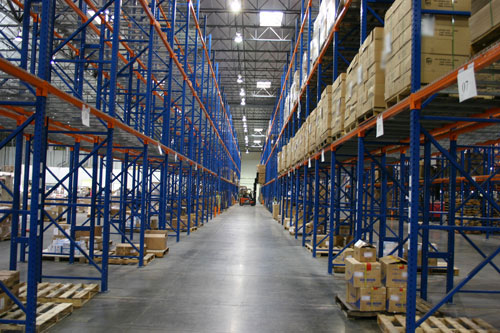
The picture above is closest to the receiving area, and thus is the emptiest of the staging area. Newegg's facility here is no where near full capacity but also important is the fact that Newegg doesn't keep product for very long at all, which allows them to usually take advantage of the best pricing possible and in turn offer highly competitive prices to their customers.
The farther away you get from the receiving area, the more crowded the warehouse becomes:
The Picker
Finally, at the very back of the warehouse there's a three-level rack/picker setup and this is where your order from Newegg is actually born.
The three levels are organized in terms of product "velocity" or the speed at which Newegg sells through of that particular product. A proprietary algorithm designed in-house by Newegg determines velocity. High velocity products (pictured below) such as in-demand motherboards or video cards will be found on the first floor, while medium and low velocity products such as server boards, certain optical drives, etc... will be found on the second and third floors respectively. The idea is that the easiest to load floor is the first floor, and that's where product that needs to be frequently replenished should be.
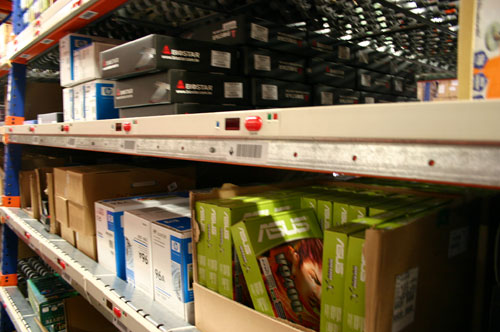
Some "medium velocity" items
As soon as Newegg receives your order it is allocated a bar-coded tub; the encoded in the tub's label is data on every item that's in your order as well as where it is located within Newegg's warehouse. The automated system will not print a shipping label for your order unless every item in your order matches all of the barcodes in the tub.
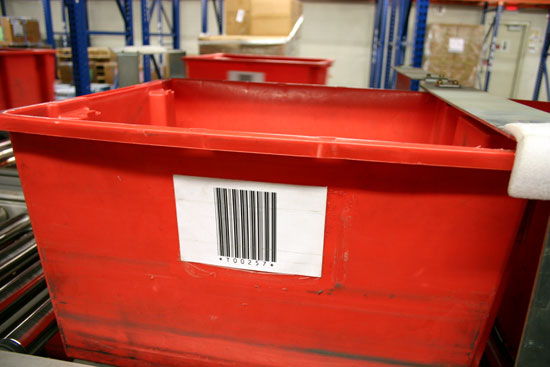
The tub glides along a rolling conveyer, which will carry the tub from the start on the first floor all the way up to the third floor. Along its journey it will pass by Newegg's inventory; the system (pictured below), knowing exactly what your order should contain, will stop the tub whenever it gets to an item that needs to be put into it.
![]()
On the first floor, product is kept above and opposing the rolling conveyer. The product is grouped by frequency of purchase, not by type of product, so you will see items like motherboards on all three floors, not all grouped together in one area.
Beneath every product is a numerical readout as well as a red "Confirm" button:
When a tub rolls by product that it needs the system stops the tub and starts blinking the confirm button beneath the product in the immediate area that needs to be put in the tub. The display next to the confirm button will give the closest worker a readout of how many of that item are needed.
Next to every stopped tub there is a similar button and readout combination, this time telling you how many of that product have to be put in the tub. You may have two tubs roll by that both require the same motherboard, so while the counter by the motherboards will tell you that you need two, the displays by the two tubs will keep you from placing too many of the wrong item in one tub.
Once everything is filled at this stop there's one last confirm button to hit and then the tubs move along.
Newegg - The Green e-Tailer
Newegg's rolling conveyer system has built in box recycling support:
The tray suspended above the rolling conveyer (pictured above) is where the workers place empty boxes. Workers on the floor above simply toss their boxes through the holes in the floor:
The boxes are then sent down this chute where they are collected for recycling:
As you can guess, Newegg goes through a lot of cardboard during their day to day. They go through so much that they've got their own compactor outside that compresses all of the recyclable cardboard together and prepares it for pickup.
But back to your order; the tub moves along until it is complete, once complete it drops down to the express line and goes directly to the end of the assembly line.
The elevator down to the express lane is behind the tinted glass seen above. The express lane itself is seen below:
If you pay the $2.99 for express shipping then the system automatically allocates you a blue tub and wherever possible your tub gets priority:
The Secure Area
While motherboards, optical drives and video cards are kept in the three stories of racks, the more expensive items like CPUs, memory and software are kept in a separate area that's fenced in. After all of the components from the picker area are placed into your tub, it rolls down a ramp towards the secure area:
Here we are standing at the third level of the picker assembly line looking down upon the secure area:
And after making our way down we find ourselves at one of the entrances to the secure area:
It may not look like much, but what's contained within is truly a tech enthusiast's candy store. Newegg keeps the processors segregated, all of the Intel CPUs were on our left, while all of the AMD CPUs were on our right.
While we were wandering around the CPU area we did manage to swipe a few processors for you. The best we could do was a set of five Athlon 64 X2 4600+ CPUs; we'll be giving one away each day from February 14, 2006 through February 17, 2006 and the final CPU will be given away on February 20th. To enter to win just head over here and drop your email in the box, good luck :)
CPUs weren't the only things plentiful in the secure area; there was also lots of memory on hand:
Packing your Order and the Peanut Gun
With your order now complete, your tub heads down this high speed rolling conveyer but you will note that the conveyer has a row of metal links on the right side. The purpose of these links is to push your tub into the appropriate ramp for boxing when the system tells it that one is free. The picture below shows the metal links in action:
After your tub is sent down the ramp, everything is removed from the tub, scanned and compared against your order. Newegg's system will not print a shipping label unless the items in your tub match the items you ordered. With everything scanned and your label printed your items are boxed and then sent off to the peanut gun.
The peanut gun is by far one of the coolest things in Newegg's warehouse, and it's exactly what you'd expect. An enormous vat of packaging peanuts is hung from the ceiling of the warehouse (pictured above) and individual guns dangle from it like cow udders (pretty picture):
The peanut gun itself is pretty simple; you aim, squeeze the trigger and peanuts come out:
With your valuables bubble wrapped and the box filled with peanuts, it's handed off to the automatic taping machine. That's right, you hold the box shut and feed it into the machine that takes over and tapes it shut.
The Automatic Box Maker
An automatic taping machine isn't the only time saver at work in Newegg's warehouse, at the end of the production line there's an automatic box maker that takes collapsed cardboard boxes and folds them into a box that's ready for your order.
There's a stack of collapsed boxes on an incline that feed the machine as you can see below:
A set of four suction cups lunge at the first collapsed box attaching themselves to it and pull it out, thus expanding the box:
With the box fully expanded, the bottom flaps are folded in and the box is pushed along:
After it's done with one box, the machine resets itself and begins on the next:
The automated box maker makes a lot of boxes:
Between the picker, the extensive rolling conveyers, peanut guns, automatic box maker and taping machine things are bound to go wrong. Just in case you were wondering, Newegg does keep a handful of spare parts for all of the machinery in their warehouse:
Shipping and the UPS/FedEx Debate
With the box taped your order is now on the last leg of its trip through Newegg's warehouse as it heads down the final set of rolling conveyers.
The metal crates and employees that you see below are all for Army Post Office and Fleet Post Office (APO/FPO) shipments to the US Military. "Shipping to the US Military is requires extensive paperwork in comparison to our normal shipping operations," says Howard Tong, Vice President of Newegg.com. "Not many companies provide this service but we feel it's worth the extra effort to support our troops and our nation."
With your box packed, labeled and taped up it's off to shipping and it's in Newegg's shipping that most of the recent controversy has been about. Newegg's default shipping is through UPS, although you can pay extra for FedEx. Newegg used to be a FedEx shop by default, however recently FedEx significantly raised their rates, which Newegg passes directly onto their customers. Newegg claims that the rate hike was an attempt by FedEx to discourage customers from shipping via 3-day air, which loses money for FedEx, and instead choose FedEx ground which is profitable.
However FedEx Ground isn't as good as UPS ground, so the end result is frustrated FedEx 3-day air customers that have to pay more, or customers forced out of pricing to go with UPS, which hasn't always had the best track record. In response to complaints about UPS VP Tong says, "We're serious about providing our customers with the best service. We've taken the criticisms about UPS constructively and have greatly improved the situation. However we're always striving for perfection and always welcome further feedback."
With the truck loaded, it's off to your delivery address. As we mentioned at the start of this article, Newegg's goal is to be able to have your shipment to you within 2 days of ordering it regardless of shipping method. It's not a guarantee, but rather an internal goal that they've been striving for ever since their inception.
Final Words
There's not much you can conclude about touring a warehouse like Newegg's, there's no buying recommendation, there are no roadmaps to talk about, or upgrade paths to plan out. That being said, there are a couple things that we took away from the experience:
Quite possibly the most impressive part of the tour was the automated setup of the warehouse that Newegg's logistics team lead by VP, Howard Tong designed. Wherever possible the room for human error was minimized or completely removed, and the system itself is constantly learning from the way that Newegg's customers shop to further optimize itself as time goes on. The likelihood of your order getting damaged at Newegg's warehouse is very slim from what we saw, everything is handled very carefully and wrapped very meticulously. As we mentioned earlier, the potential for human error is as minimal as possible; we can only imagine what the Newegg folks would do to their warehouse if they had a few capable robots.
The other very impressive aspect of the tour was exactly how clean the warehouse was. While we wouldn't want to eat off the warehouse floor regardless how clean it was, we were quite impressed at how tidy the whole operation is.

From left to right: Howard Tong (VP), Anand and Ken Lam (Vice Chairman)
Given that the AnandTech readers were some of the most vocal in favor of Newegg in its early days, VP Howard Tong did have some nice things to say for you all:
"As you can see Anand, we put great effort into building a bulletproof infrastructure because we are committed to ensuring our customers have the best service. Sure, you can find smaller companies that may be a dollar or so cheaper, but at Newegg we decided we wanted to give our customer the best experience every time, and that is why we must invest into advanced systems that other companies do not have. We built all this with the customer specifically in mind.
Newegg has never before given the public this kind of exclusive look into its internal business proceses. At Newegg we have always loved the AnandTech reader. These are people whose deep love and understanding of technology help drive its innovation and advancement. In appreciation for this passion we will always do our best to give our tech customers the best selection, prices and service."
We hope this tour has been enjoyable and we'd like to thank Newegg for giving us the opportunity to present you with it. Now head on over to the entry form and try to win those Athlon 64 X2 4600s.

